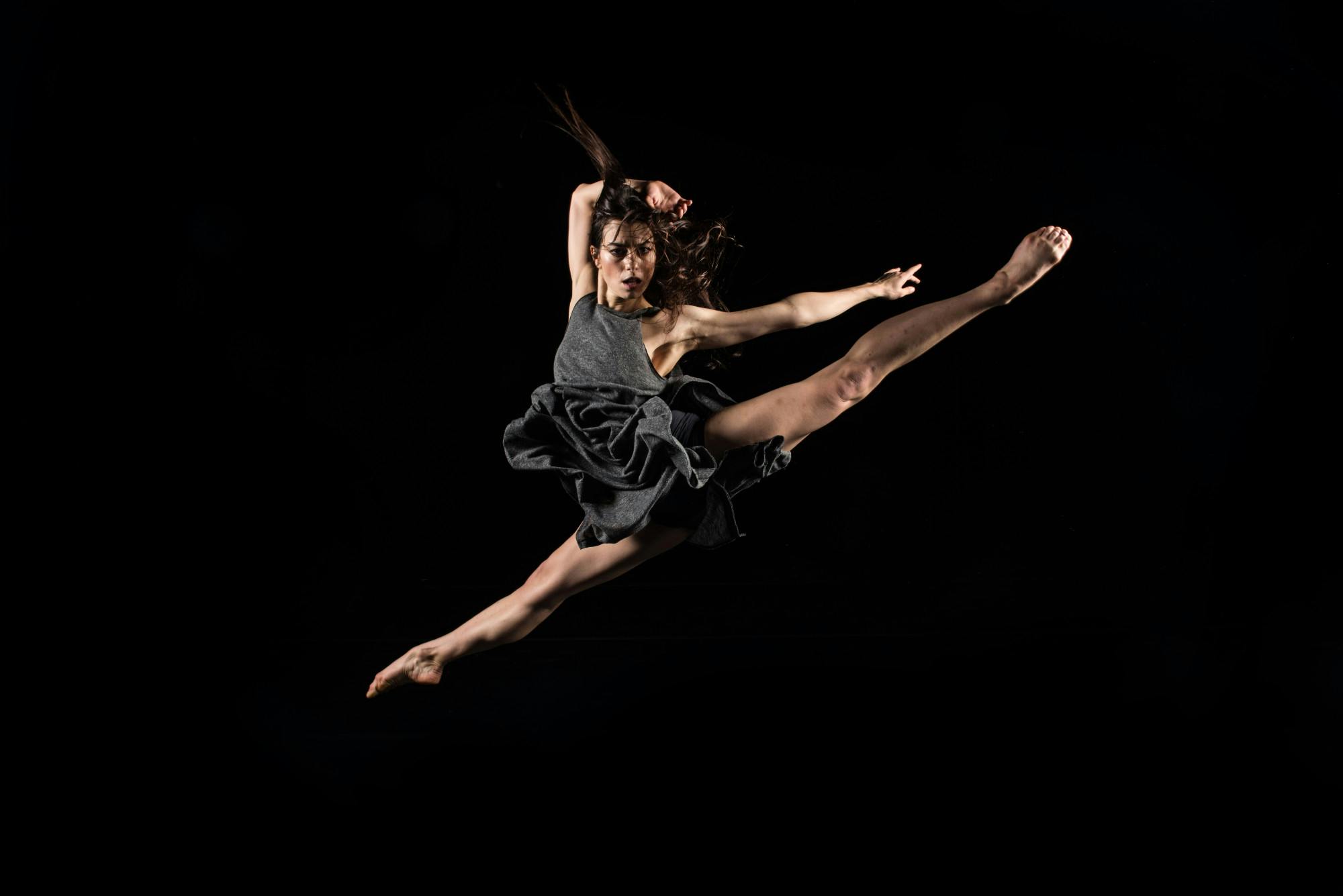The minute the lights came up on “BODYTRAFFIC” at the Wharton Saturday night, I was entranced in a world I hadn't explored in a long time: dance.
Throughout the three pieces comprising the show, the dancers seemed to be telling separate parts of the same story through their use of specialized choreography to individual dancers. It was obvious they all had their own personalized style of dancing, which only added to the show and its cohesiveness as a form of expression.
Throughout the show, the dancers were also consistently so meticulous in their technique and control of body, proving they are not only good storytellers in dance, but also classically trained with skill and precision. They are also actors in their own art, telling the story with their whole body including their expressive faces along with the music and choreography.
In the first piece, “A MILLION VOICES,” the music of Peggy Lee was used for the choreography, mixing old jazz with modern dance for a unique take on the dance style, but pulling it off effortlessly.
Although this was an ensemble piece and every dancer was showing off their talent, my eyes were drawn to Tiare Keeno, commanding the stage with her moves.
However, my favorite part of the first piece was near the end when Tyeri Morrison was left on stage by himself without the company at the end of the Freedom Train, panting and trying to catch up with the metaphorical train without backing music. I think this symbolized his perspective as an African American and chasing the never-ending fight of catching “the freedom train” and never giving up, yet wavering due to society's pressures. Audience members also saw this as a standout moment.
“I think some of the more powerful stuff was at the very beginning,” audience member Jonas Greenberg said. “The freedom train piece when (Tyeri) … was left on stage and had to convey his own experience in that he didn’t have as easy a time riding the freedom train.”
The second piece, “RECURRENCE,” was my absolute favorite. Yet again, my favorite dancer Keeno was on the stage, as well as Pedro Garcia, who had amazing chemistry and acting ability as they portrayed a struggling couple.
The music repeated the phrase “bending your back over, and over and over.” It was apparent that this piece was a metaphor for a failing relationship that continues to go through the motions of trusting and falling even when the trust is already broken. They are bending their back to fit each other over and over again, yet nothing changes, which is made clear by part of the dance ending in the same pose it began.
At points in the dance, the mistrust and deceit are obvious with one of the dancers covering the other's eyes, and the other dancing behind their back. I believe this was symbolic of the couple doing things in the relationship that would break their trust secretly, yet still trying to keep it alive by deceit.
At the end of the dance, both of the dancers crash to the ground under the weight of each other. I think they fell under the pressure of trying to trust each other but never fulfilling this trust. This message was the most powerful to me throughout the show.
However, the last piece titled “SNAP” was a fan favorite with rave reviews from the audience, many saying this piece featuring James Brown soul music was the standout in the show.
“I think the last number 'SNAP' was my favorite,” Greenberg said. “I think that the remix of the James Brown stuff was really incredible, eerie and otherworldly. It felt like a surreal, hallucinogenic trip almost.”
Sunshine Rasdale, another audience member, also commented on the James Brown music. While I could appreciate their comments because I enjoyed it too, it got me thinking: Do many people appreciate dance when they don't recognize the music? Can the art form of dance be separated from popular music and still appreciated as art?
I felt as though the dance aspect was the most important part as well as the storytelling, but does mainstream media affect us so heavily as to not appreciate the things we don't recognize? It made me angry that some pieces would possibly not be seen as worthy because it's unfamiliar. However, that's what art is about. Art is about the new, the never-before-seen and the original. All of the pieces were amazing, and I thought that the originality should be at the forefront, not someone else's music.
However, it seemed that everyone still left the last piece with how it was supposed to be interpreted: individually. I believe that dance as dense and as artistic as this tells a different story to everyone, and the audience also picked up on this.
“There was such a story being conveyed without really knowing what the story was,” audience member Mary Wardell said. "You just intuited what was happening.”
Rasdale explained that no matter what piece was being performed, she liked the art aspect of it, truly appreciating it as a form of expression and connection to the audience.
“It was just inspiring," another audience member Lisa Rentz said. "They’re amazing dancers and athletes.”
“BODYTRAFFIC” was a show filled with expression, stories told from unique perspectives, and a spectacle of how music and movement can move an audience.
Support student media!
Please consider donating to The State News and help fund the future of journalism.
Discussion
Share and discuss “Up for review: 'BODYTRAFFIC' at the Wharton ” on social media.







